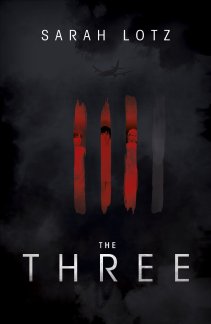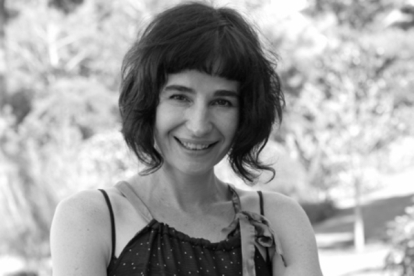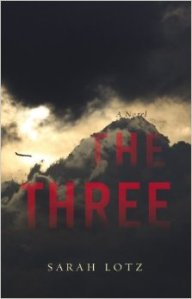The Three: A Horror Novel for Skeptics
June 8, 2014 § Leave a comment
On Black Friday, 2011, four planes went down at exactly the same time, in four separate corners of the globe. Only three children survive – in Japan, Hiro; in America, Bobby; and in the UK, Jess, whose twin sister and parents perished.
With no explanation as to why the planes crashed, the survival of the children – dubbed ‘The Three’ by the ravenous press – is nothing short of a miracle.
Bereft of their parents, The Three are placed into the custody of their next-of-kin. While their new guardians are overjoyed to have them alive, each becomes concerned, and then disturbed, by the children’s increasingly bizarre behaviour.
For me, horror novels present the ultimate obstacle in the suspension of disbelief. In order to accept that Carrie is going to rain fire on her bullies, we first must accept that she has telekinetic powers. Somehow, I find it harder to accept this version of reality than the one i in which a Ministry of Magic hides an entire population among everyday British citizens. Maybe that’s because horror, as a genre, doesn’t need to establish an entirely new world from the ground up in order to set the stage for its conflict.
The Three is a horror novel for skeptics. For one thing, it doesn’t take a great leap of faith to imagine the terror that would arise from four planes going down at the same time in different parts of the world. With this narrative device, Lotz draws upon an all-too-familiar fear that the world as we know it is about to change. As I didn’t really have a problem believing that planes could be the modern harbinger of “end times”, the novel sucked me in from the get-go.
All over the globe, people are reacting to the events of Black Friday. In America, Pastor Len believes that The Three are the first of the four horsemen, and that their arrival is a sign that Judgment Day is close at hand. Evangelism borders on mass hysteria as the Bible Belt latches on to Pastor Len’s message. In Japan, a cult forms around Hiro, the six-year-old survivor of the plane that went down in Osaka. Hiro’s eighteen-year-old cousin, Chiyoko, whose family is bound up in the creation of “surrabot” androids, is now his primary carer. Chiyoko’s online conversations, detailing how she feels about the events of Black Thursday and Hiro himself, form the basis of Hiro’s story. This was my favourite subplot of the novel. In England, Paul struggles to care for his niece Jess as her behavior becomes increasingly disturbing.
The Three is written in an epistolary format – that is, as a series of documents and clippings. It’s also a book within a book, given that the majority of the novel is taken up with excerpts from investigative journalist Elspeth’s narrative history of Black Thursday and its aftermath. This format, which readers might recognize from the recent horror hit World War Z, tends to officiate a horror story in a way that traditional prose cannot. For the skeptical reader, it can be tough to accept not only the apparatus of horror, but also a single, or limited, perspective of the event. The story of The Three is more believable because of the number of people telling it, their various relationships to the incident and the children themselves, and their differing characters. Each of the characters brings a different set of biases, personalities traits and circumstances to the Black Thursday tragedy, and through their collective perspectives, we see an ominous truth being shaped.
The narrative emerges piece by piece from all over the world. It’s a slow burn, and at first, it’s not entirely clear what’s going on. The lack of specificity lends an unshakeable sense of eeriness to the novel – the reader is constantly questioning the nature of Black Friday and The Three, because something simply doesn’t feel right.
The uneasy feeling of foreboding culminates in an epilogue that can only be described as downright scary. Elspeth, the author of the “book within a book”, decides to revisit the story of The Three, and travels to the infamous suicide forest in Japan. What she finds there will likely have you sleeping with the light on for a few nights after you finish the book.
Why would they need a reason? Why do we hunt when we have enough to eat? Why do we kill each other over trifles? What makes you think they needed any more motivation other than to simply see what might happen?
The Three is a horror novel for people who think they don’t like horror novels. Lotz is a master of suspense, and her characterization is far better than I’ve come to expect from the horror genre. With the international scope of World War Z and the intensely personal nature of Dictaphone transcripts, internet conversations and journal entries, The Three leaves no stone unturned. If you’re in the mood for something scary, this novel is worth your time.
Want a copy? Brisbanites, head to Pulp Fiction’s new store on Adelaide Street! Visit their Facebook page here. Wherever you may be, be sure to support your independent booksellers!
Are you a fan of horror? Check out these reviews, too!
M. R. Carey’s THE GIRL WITH ALL THE GIFTS
Jeff Vandermeer’s ANNIHILATION
and Mira Grant’s PARASITE



